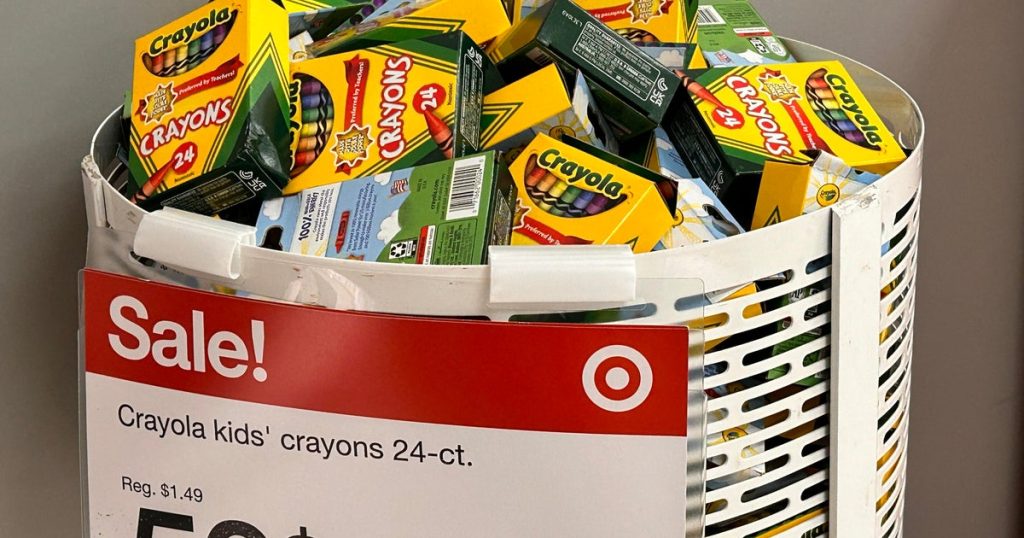As the back-to-school season approaches, many American families are already taking action to prepare. A recent survey from the National Retail Federation (NRF) reveals that two-thirds of back-to-school shoppers have started purchasing clothing and supplies earlier than last year. This uptick in early shopping reflects heightened concerns about economic factors, with families aiming to secure the best deals amid rising prices driven by tariffs and inflation.
Over 50% of surveyed consumers stated that their early purchases are influenced by fears surrounding the cost of goods due to potential tariffs. With back-to-school spending projected to rise to $128.2 billion this year, stores are responding by ramping up sales and discounts to attract budget-conscious shoppers, further illuminating the ongoing economic challenges families face.
| Article Subheadings |
|---|
| 1) Economic Concerns Drive Early Shopping |
| 2) Pricing Trends for School Supplies |
| 3) Retailers Respond to Consumer Needs |
| 4) Strategies for Maximizing Budgets |
| 5) The Impact of Tariffs on Prices |
Economic Concerns Drive Early Shopping
This year, back-to-school shopping is starting much earlier for American families. The NRF survey shows that approximately 66% of families have begun their shopping journey, a significant increase of 55% compared to last year. Families cite economic uncertainty as a driving force behind this shift, with 51% of participants expressing worries over upcoming tariffs. This proactive approach reflects a calculated strategy to mitigate rising expenses.
With rising prices and the threat of inflation looming, many consumers are opting to begin their shopping early, hoping to capitalize on current sales before the expected price hikes take hold. One NRF official explained that shoppers are becoming increasingly strategic, drawing from previous experiences where they faced higher costs as the school year approached.
Pricing Trends for School Supplies
According to the Federal Reserve Bank of Saint Louis, prices for school supplies and educational materials have hit record highs this year. The average spending anticipated by families for school supplies stands at approximately $858.07, a decline from the previous year’s average of $874.68. Meanwhile, college students are also expecting to reduce their budgets, anticipating an average expenditure of roughly $1,325.85, down from $1,364.75 in 2024.
The NRF also indicated that families’ combined spending on back-to-school essentials, which is predicted to reach $128.2 billion this year, reflects an increase in shoppers rather than a rise in individual spending. This scenario underscores how economic stress is reshaping typical consumer behaviors.
Retailers Respond to Consumer Needs
In light of the shifting shopping landscape, retailers are actively promoting discounts and early sales to attract budget-conscious families. Major players like Amazon, Target, and Walmart are rolling out back-to-school deals to appeal to consumers. In a recent announcement, Walmart confirmed it would lower prices on 14 popular back-to-school items, in response to consumer demand for more affordable options.
Moreover, retailers are making the shopping experience more convenient and straightforward for consumers, acknowledging the importance of affordability in these challenging economic times. NRF’s spokesperson noted that traders are focused on providing shoppers with viable options to ensure their students’ success, regardless of income level.
Strategies for Maximizing Budgets
Amid rising prices, families are becoming creative to manage their budgets effectively. According to NRF, about 80% of shoppers are planning their purchases around July’s back-to-school sales, seeking to make the most of available discounts. Reports indicate that families are also utilizing alternative strategies such as “buy now, pay later” options, thrift shopping, and purchasing used or refurbished items to cut costs.
As shoppers actively seek out bargains, they are adjusting their priorities to ensure all essential items are procured without breaking the bank. This resourceful mentality presents an in-depth view of how economic fluctuations are shaping consumer behavior across the nation.
The Impact of Tariffs on Prices
The impending tariffs announced by former President Donald Trump are further compounding families’ worries. Set to take effect starting August 1, these tariffs target imports from over 20 countries. The anticipated increase in prices for apparel, electronics, and other back-to-school items directly affects parents and students, making early shopping seem even more critical.
Experts indicate that the inclusion of such tariffs may invoke price increases on various school-related items, further contributing to the rising costs of education. Consumers are left to navigate this terrain cautiously, balancing their need for essential supplies against the backdrop of economic uncertainty.
| No. | Key Points |
|---|---|
| 1 | Two-thirds of American families started back-to-school shopping early due to economic concerns. |
| 2 | Prices for school supplies are at an all-time high, impacting overall spending. |
| 3 | Major retailers are responding with discounts and promotional sales to attract consumers. |
| 4 | Families are adapting by seeking bargains and utilizing alternative shopping strategies. |
| 5 | Upcoming tariffs could further exacerbate rising prices for back-to-school items. |
Summary
The back-to-school shopping season is seeing unprecedented early engagement this year, fueled by rising economic pressures and concerns regarding tariffs. With families planning to navigate this complex landscape, the way that they approach this critical season will likely have lasting implications on local economies. As retailers respond to shifts in consumer behavior with strategic sales and discounts, both families and businesses continue to adapt to a challenging economic environment.
Frequently Asked Questions
Question: Why are families starting back-to-school shopping earlier this year?
Families are initiating back-to-school shopping earlier due to economic uncertainty and concerns about rising prices from tariffs, prompting them to seek out better deals before costs potentially increase.
Question: How much does the NRF predict families will spend on back-to-school supplies this year?
The NRF predicts that families will spend approximately $128.2 billion on back-to-school supplies this year, up from $125.4 billion last year.
Question: What strategies are families using to manage their back-to-school expenses?
Families are utilizing strategies such as looking for discounts, buying used or refurbished items, and employing “buy now, pay later” options to manage their back-to-school expenses effectively.


